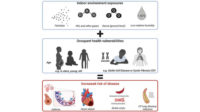Now that many buildings in the U.S. are being reopened, how do we safely manage the indoor environment so that occupant health is appropriately maintained? Guidelines from Europe and the U.S. are in conflict, so our strategies must be based on an understanding of research showing the risks and opportunities of each approach.
The primary difference in the guidelines is the recommended approach for indoor ventilation — how much outdoor air ventilation should be used versus recirculated air?
The best guide to safe indoor climate management is to understand the data behind each recommendation.
The Federation of European Heating, Ventilation, and Air Conditioning Associations (REHVA) recommends that prior to and during occupancy, there should be no recirculating air in buildings to reduce the transmission of the virus responsible for COVID-19 through HVAC systems. The scientific rationale behind this is that viral particles in tiny, desiccated droplet nuclei (less that 10 microns in diameter) emitted when people couth, talk, or sneeze can remain airborne and theoretically pass through HVAC systems and infect healthy individuals. While airborne transmission in tiny droplets has been documented for SARS-CoV-1, and is likely for SARS-CoV-2, there is no documentation of disease transmission through HVAC equipment.
In contrast to REHVA, ASHRAE believes HVAC systems should continue to provide the ventilation, humidification, and filtration necessary to keep occupants comfortable and healthy. Furthermore, ASHRAE asserts HVAC systems can reduce the concentration of SARS-CoV-2 ASHRAE in the air, therefore reducing its airborne transmission.
Where do these differing viewpoints leave building managers, who are trying to safely reopen their facilities? As with most systems, a rational balance is needed.
In this situation, summertime climates have mid-range humidity levels that allow the majority of building ventilation to come from outdoor air without resulting in excessive energy use to provide heating, cooling, or humidification.
To maintain healthy facilities, we must balance the warming/cooling of indoor temperatures and humidity levels by diluting outdoor ventilation levels. To do this, some amount of recirculation is necessary. In conjunction with recirculation, in-duct cleaning technologies, such as UV germicidal irradiation and MERV-13 filtration with bipolar ionization should be considered. Relative humidity levels should be maintained between 40%-60% to reduce air particles, decrease viral activity, and maintain human respiratory immune systems. Essentially, we need to balance concerns about recirculating infectious particles with indoor conditions to support occupant health, specifically temperatures and mid-range humidity.
As with most important decisions, we must achieve a rational balance based on the available data.




